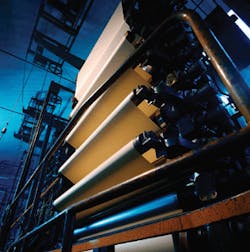A simple fix can prevent voltage-related complications.
It seemed like an easy project at first: Replace an old adjustable-speed DC drive with a new digital DC drive. The old drive was part of the original plant design, installed nearly 30 years ago, and replacement parts were becoming increasingly hard to find. The drive had individual relay cards, which we had stockpiled in our inventory, but they were no longer in production. Once they ran out, that was it. The drive had long since exceeded its life expectancy, and it was past time to replace it.
Before we put the old drive out to pasture, we ordered a new digital drive of the same specifications and manufacturer from the local supplier, which had furnished the old drive. Once the model number was available, we could begin the engineering for the project. However, we had to complete one more check: Measure the supply voltage and make sure it met the tolerance levels required by the new drive.
The old drive's AC input specs were 230V, 33A, and 3-phase. The new drive's specifications were the same, with an additional ±10% tolerance requirement on the AC input. This meant the drive required an AC line input of no less than 207V and no more than 253V. When a plant electrician checked the line voltage, he measured it at 205V; we had to address this low-voltage condition before we could proceed.
We were tempted to just install the new drive and ignore the voltage readings. After all, the old drive had operated 24/7 without problem for 30 years. However, this approach presented two problems: First, it violated the requirements set forth in 110.3(B) of the NEC. Second, it ignored the voltage fluctuation problems at the plant, which occasionally shut down the machines.
Sec. 110.3(B) of the NEC requires you to install equipment in accordance with the instructions supplied by the manufacturer. Installing the new drive in a system with a voltage level outside of its specs would violate the Code.
In response to the low-voltage condition, a step-up 208/230V isolation transformer seemed the obvious solution. Unfortunately, this type of transformer is not an off-the-shelf item. One distributor we contacted suggested we purchase a 240/208V transformer and reverse the connections. Unfortunately, this installation would also violate 110.3(B). When we pressed him, the distributor came back with a 15kVA, step-up, isolation transformer for $1,300, but on a project that was budgeted for $6,000, a $1,300 add-on wasn't an option.
Instead, we considered the installation of boost transformers a more cost-effective solution to our problem. Boost transformers are used when an increase of 5% to 20% line voltage is required and isolation is not a concern. A buck-boost transformer is a single-phase transformer connected as an autotransformer. An autotransformer connection differs from a standard transformer connection in that one of the input lines is common to both the primary and secondary of the transformer.
You must consider three factors when selecting a transformer for boosting the line voltage: supply voltage, output voltage, and load current. For our application, the supply voltage in the plant was 205V. The output voltage from the boost transformer needed to be as close to 230V as possible (an increase of approximately 25V), and we measured the load current as 33A.
We found the kVA of the boost transformer by multiplying the secondary voltage by the load amperage (24V x 33A = 792VA). Based on this information, we selected a 1kVA, 240/24V transformer to solve our problem. It's important to note that on a 3-phase delta connected system, you only need two single-phase boost transformers. The connection is an open delta configuration.
But what effect would this have on the secondary output? We found it increased the line current in the secondary to 41.67A (1,000VA ÷ 24V = 41.67A). For this application, with a 205V primary and a 10:1 ratio, the output voltage should be approximately 225V.
By using boost transformers on this project, we not only solved our low-voltage problem on the circuit, but we also remained within budget on our repair estimate. The total cost for the two transformers, including a line reactor, was $400.
Frohne is plant engineer at Johns Manville, Richmond, Va.
